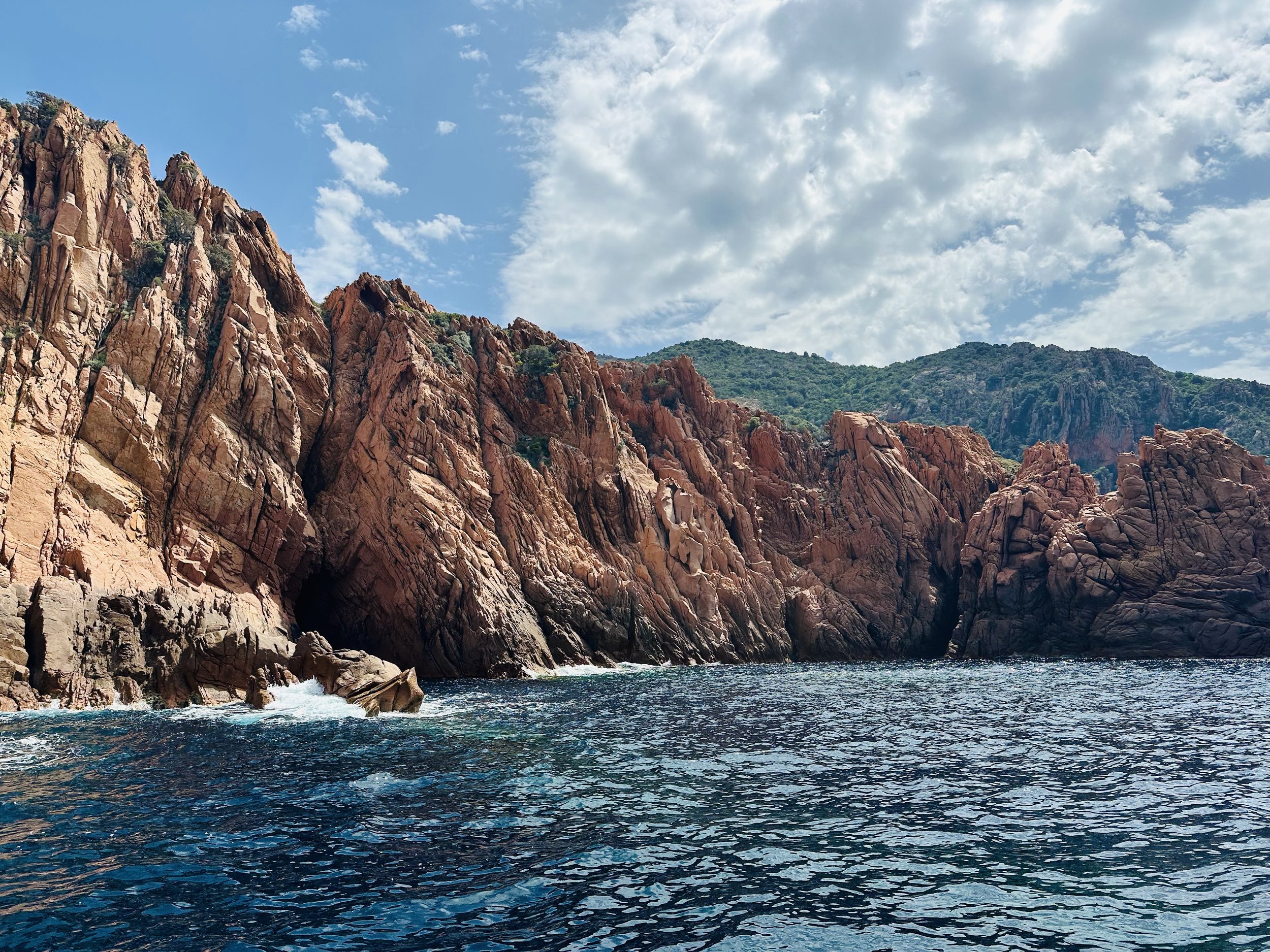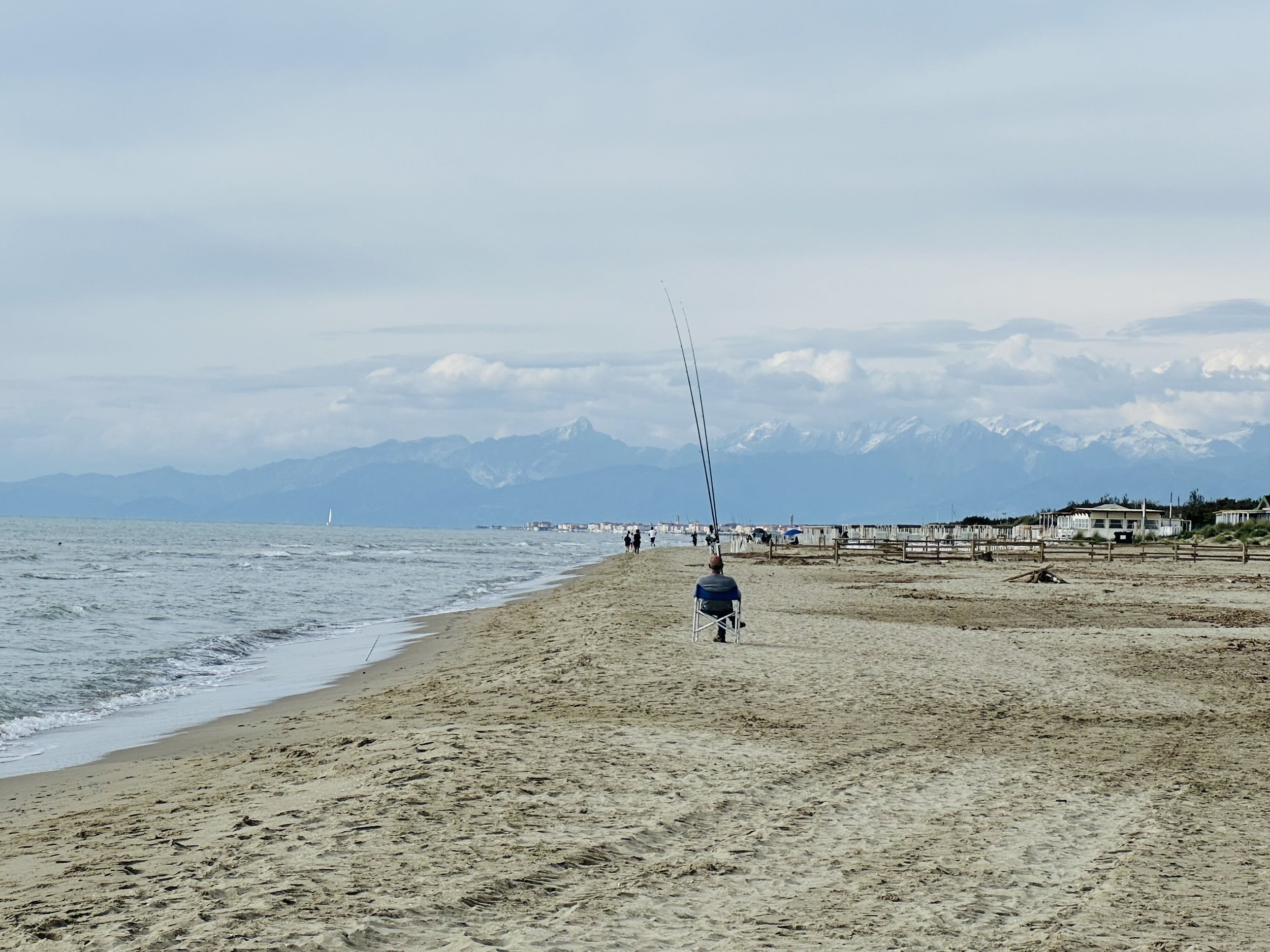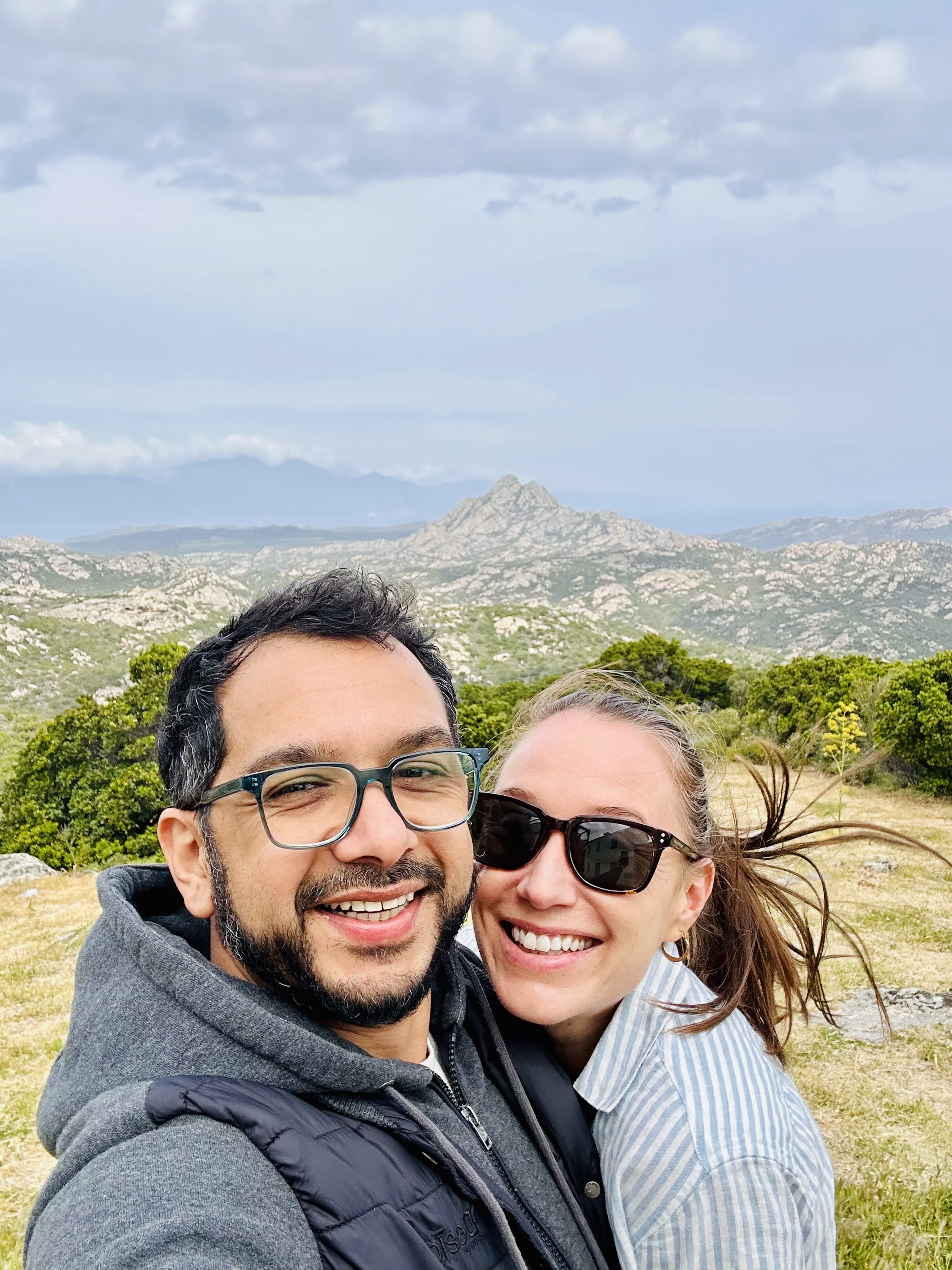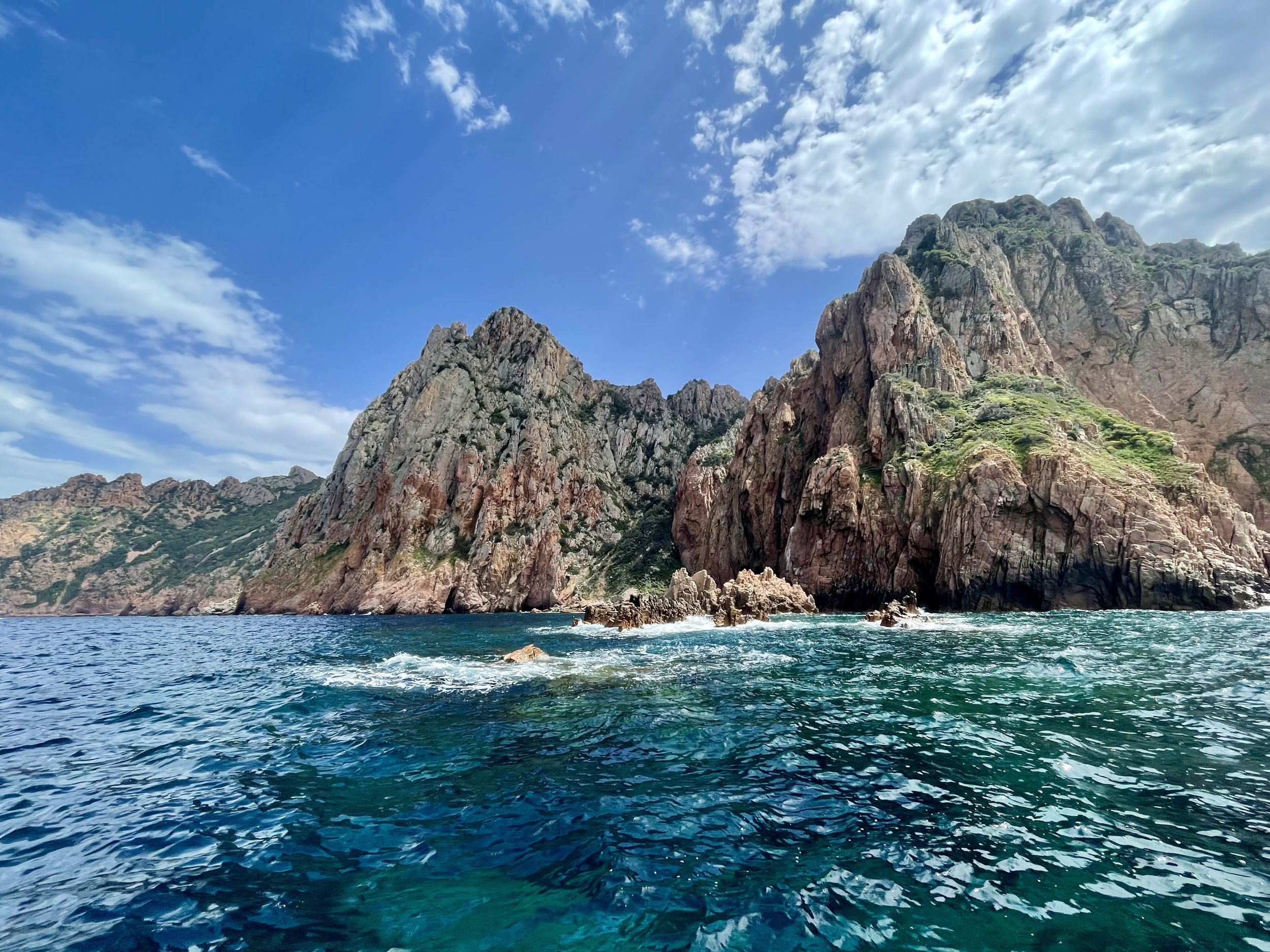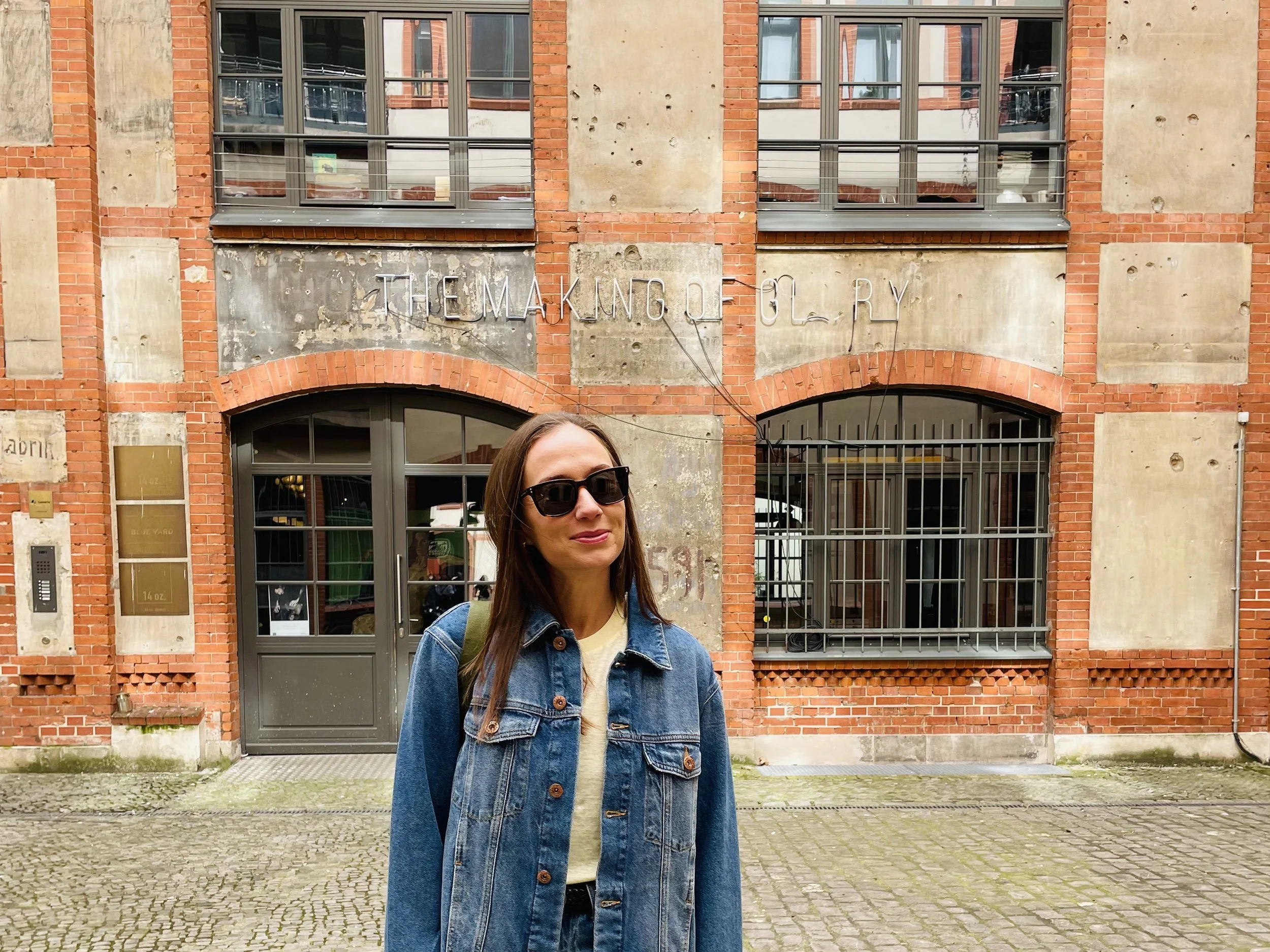Corsica: The Central West
Corsica’s central west was our first real taste of the island - and what a welcome it was. From the moment we drove off the ferry in Bastia, we were met with winding mountain roads, wild coastal views, and rugged charm. With Porto as our base, we spent a few days hiking, swimming (even if only briefly - hello, spring water temps!), and road-tripping through some of the island’s most dramatic scenery.
[This is Part 1 of a two-part series. Click here for Part 2. Click here for our full Corsica itinerary].
Day 1: Lucca, Pisa and Livorno
It’s a long distance from Zurich to Livorno, Italy (where we would catch the car ferry), so we broke up the drive with stops in Lucca and Pisa. Lucca is one of those classic Italian towns surrounded by medieval walls, full of churches, narrow alleyways and lively piazzas. We had a delicious lunch of perfectly chewy pasta and white wine, and Raunaq ordered a sweet vegetable tart for dessert (which sounds weird, but was actually pretty good!).
Lucca feels very quaint and lived-in, and is a great city for a wander. I was especially charmed by one canary yellow building that had a string of white underwear fluttering in the breeze. After walking around for a bit, we got gelato for dessert (naturally), picked up some fresh focaccia for the road (naturally!), and then headed to nearby Pisa in the afternoon.
Our stop here was quick, purely for the tower and the obligatory tower photo.
The center square is very crowded with tourists and peddlers (and apparently car thieves also lurk about, so be careful where you park, especially if you have luggage in the car). It is a place I wouldn’t go out of my way for, but truthfully, the Tower of Pisa is quite striking to see in person. It really does lean, and the angle is far more pronounced than it seems in photos.
Finally, we headed to Livorno, a port town on the Ligurian Sea. Our ferry departed early the following morning, and it was easiest to just stay near the port. There’s not too much going on here, especially in the shoulder season. The beach was cold and empty, the bars and restaurants shuttered. I did love this lone fisherman, with his chair turned toward the mountains instead of the ocean.
We had a very basic Italian dinner and slept in a somewhat shabby Livorno guesthouse. Nothing really recommendable, but it did the job.
Day 2: Ferry to Corsica and drive to Porto
Even though the departure time was 8am, we needed to arrive at the port before seven to get our tickets checked and to line up at the dock. The crew slapped a yellow “Corsica Ferries ‘24” bumper sticker on the back of our car, and as we waited to board, I started noticing all the other cars who had multiple ferry stickers, all from different years. So funny that people keep them on year over year. A bit like when you keep your luggage tag on your suitcase from a flight. I actually notice this all the time now in Switzerland - a car will pass us on the freeway or next to us in the parking lot, and one of us will go “Look, Corsica Ferries!” I’ll sure you’ll notice it now, too!
The ferry ride was 4 hours, and while I’ve read that experiences on Corsica Ferries can vary wildly, our trip was uneventful and we pulled into colorful port of Bastia right after noon. Let the Corsican road trip begin!
Bastia is in the northeast of the island, and our destination was Porto, in the central West. We chose the long, scenic route that would take us west through the hills and then south along the coast. The type of drive where you pull over often to stop whenever something catches your eye - the best kind of drives. We stopped for a late lunch at an unassuming roadside restaurant on the D81. I had an omelet with local sheep’s cheese, Raunaq had their homemade lasagna, and we both had the local beer that came in a mini 15ml size called a “Chjuca” (which our waiter told us was Corsican for “little”). Cute!
Then, we followed the northwestern coastline, passing through the bright seaside towns of Ile-Rouse and Calvi. I love how these pretty beachy towns have the ocean on one side, and the mountains on the other.
The last hour of this drive, as we passed from Haute-Corse to Corse-de-Sud and into the Gulf of Porto, was shockingly curvy and truly spectacular. Just as I was getting used to the narrow, constantly winding roller-coaster that is Corsican roads, this stretch took it to the extreme, with endless switchbacks clinging to the cliffs of the Scandola Peninsula. But the scenery was simply majestic. We took it slow, enjoying the view, and stopping every so often for a herd of goats to cross the road. It was quite an incredible welcome to Porto.
For our stay, we booked a small holiday apartment at Residence Capu Seninu, which was within walking distance to both the water and the small “downtown.” Dinner that night was a bit unexpected: Thai food! Raunaq found a tiny little spot (Toom Thai) that has a premade selection of curries and snacks, and you can either do takeaway, or have them heat it up and eat there. I did not plan to eat Asian food at all during this trip, and what do you know, it was some of the best green curry I’ve had in Europe!
Day 4: Capu d’Orto & Calanques de Piana
The main hike I had planned near Porto was the Capu d’Orto summit, a challenging hike to one of the most prominent peaks in the area. As a bonus, the drive from Porto to the trailhead winds through the Calanque de Piana, the famous rock formations of the region. They have a deep reddish tint that contrasts beautifully with the vegetation and water, and are quite spectacular to drive through.
Most of the trail to Capu d’Orto is steady uphill hiking through flowering shrubs and low-lying trees. Occasionally, we caught a whiff of the maquis plants, a distinctive herby scent that’s a mix of rosemary, thyme, and eucalyptus. In the last hour of the trail, the terrain gets more demanding, with a tough, seemingly never-ending scramble to the summit cross. The views at the top are absolutely beautiful, with the ocean to the west and the interior mountains to the east. It’s a great trail that showcases Corsica’s natural beauty, but I was grateful to do this hike in the spring - there’s almost no tree cover and I would absolutely overheat in the summer.
After the hike, a swim was in order. We drove through the town of Piana to the prettiest little cove, the Plage de Ficaghjola. The drive down to this beach, though, took 10 years off my life. The roads in Corsica are no joke, but this one hit the terrifying-road-trifecta: narrow, and cliffside, and steep. Heart-attack-inducing drive aside, this beach was a gem. Even if the water was a little too cold to be enjoyed for more than a few minutes, jumping in a cold body of water after a sweaty hike is one of life’s best feelings.
Driving back up from the beach was only slightly less hair-raising than the drive down. We drove back through the Calanques as the sun went down, marveling at how the warm light illuminated all the reds and ambers of the rock. After picking up local cheeses, meats and wine, we had dinner on our apartment’s balcony, looking out onto the mountains we climbed earlier in the day.
Day 4: Explore Porto & afternoon boat ride
The most popular thing to do in Porto is a boat tour, and we had one booked for the afternoon. Originally, I planned to squeeze in the Gorges de Spelunca hike beforehand, but because the weather was so nice, we instead decided to have a relaxed morning in town.
Porto’s marina is marked by a Genoese tower, perched on a rocky outcrop that juts out into the Tyrrhenian Sea. In fact the whole Corsican coastline is dotted with the ruins of these defensive fortresses, built by the Republic of Genoa in the 16th century to stave off attacks from Barbary pirates. Even though we couldn’t go inside the tower, it was nice to stroll around the base, before we plopped down on the beach to wait until our tour time.
There are lots of tour operators to choose from, and they all offer more or less the same agenda: visits to the Calanques, the Scandola nature reserve, and the coastal village of Girolata. We booked a half-day tour on a 12-person boat that supposedly had an English guide, but our driver (and everyone else on our boat) only spoke French. Well, c'est la vie. We were there for the scenery, anyway. And holy moly, the scenery!
I thought it might be a little tourist trappy, but the tour was beautiful and way more fun than expected! The boats are small enough to weave in and out of the coves, even squeezing into caves and gnarled, claw-like inlets. The coastline reminded me a bit of the Na Pali coast in Hawaii, only less lush and more rugged. It was fascinating to see the pinnacles of the Calanques from the water, especially after driving through them the day before. And the water was all different gradients of blue, from marine to turquoise to aquamarine. I had to keep taking off my sunglasses to see if the color was real.
Raunaq and I wore our bathing suits, hoping we would be able to swim at one of the stops, but even with the sunshine, it was still too cold and windy. We were also the only ones to bring bathing suits at all. Maybe that was part of the French information we didn’t receive.
But the most unexpected part of the tour was this: the boat drivers go fast. Like, super fast. Literally flying over the waves. I had to tie my bags to the back of the seat in front of me, because it was about to fly over the edge. When the tour was over and we were heading back to Porto, all the boats raced each other back to Porto.
Day 5: Drive over mountains via Corte to the southeast
Today we crossed the island, driving up over the mountains to Corsica’s eastern side. I loved this drive, watching the landscape transition through the window: coastal to mountains to gorges to marqui-covered hills. And yes, to be clear, this was from the passenger window. What, did you guys think I was white-knuckling these roads myself? No, thank you. The only thing crazier than Corsican roads are Corsican drivers.
By midday, we reached Corte, a medieval town recognizable by the prominent citadel looming above it. This fortress presides over a tangle of cobbled alleys and slightly crumbling blue-shuttered buildings, winding down to the ravine below. We wandered around a bit before finding a restaurant for lunch, then after walking up to the citadel for a view of the city below.
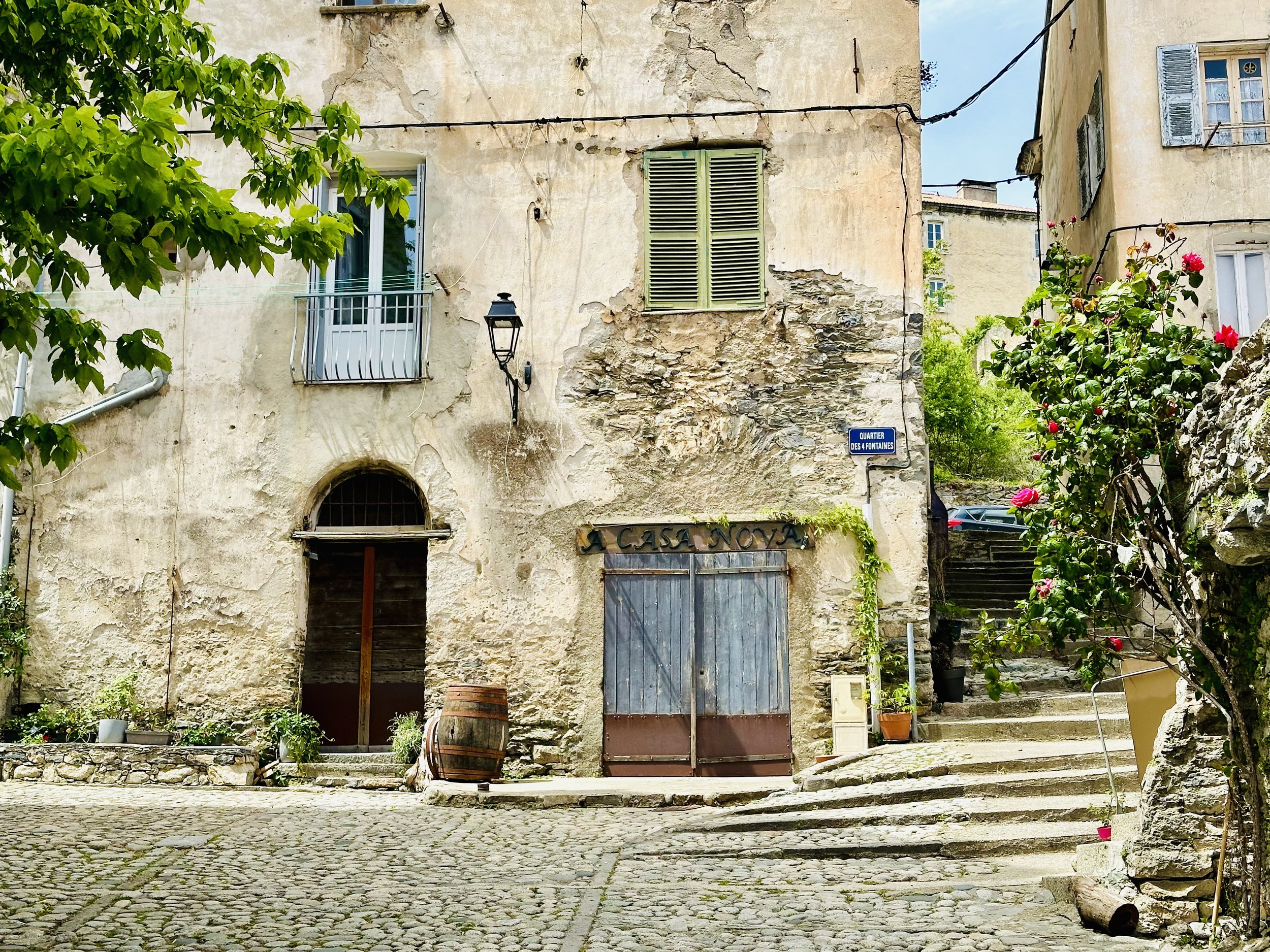
If we had more time, I would have stayed in Corte for the night. There is one hike in the area, a trail through and above the Restonica Valley, that I would have loved to do, but unfortunately it was closed due to storm damage.
And now, to the sea!
The eastern coastal road is surprisingly flat and straight, and even, dare I say - a little boring compared to the last three days. Ok, not boring, but it was just a road, you know? But that was short-lived. As we approached the southern peninsula, the coastline came alive with color. The southwest of Corsica may lack the rugged, striking drama of the eastern coast, but its Mediterranean beauty is undeniable. I let out a little shriek every time we passed one of the numerous small coves of electric blue water.
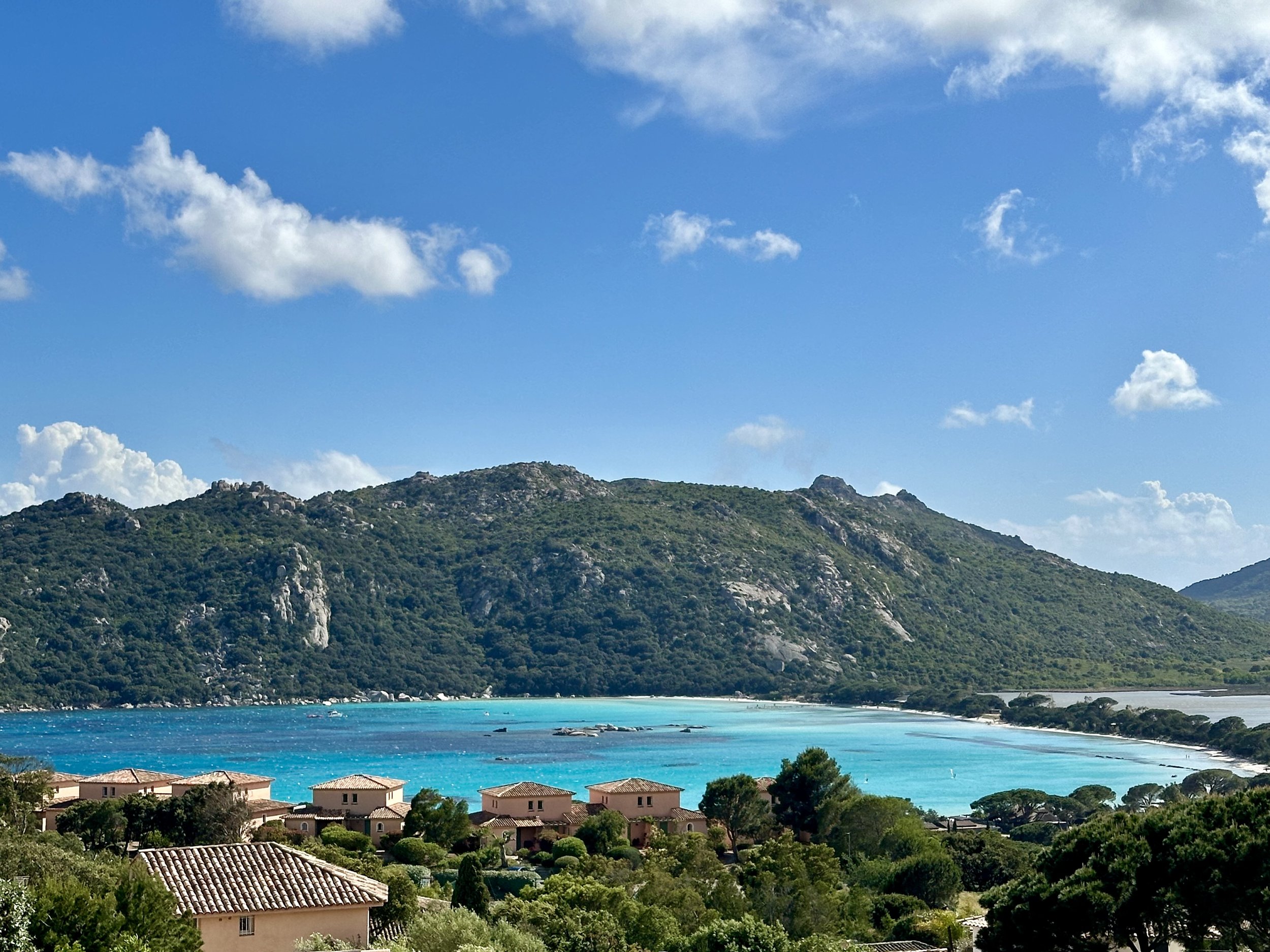
We finally arrived in Santa Giulia with a few hours of sunlight left in the day. After checking into our little bungalow, we ran down to the beach of the same name (Plage de Santa Giulia). Being within walking distance of this beach was the main reason we decided to stay in this town. Plage de Santa Giulia is a sandy, half-moon bay, ringed by umbrella pines, with clearest, most vibrant water I’ve ever seen.
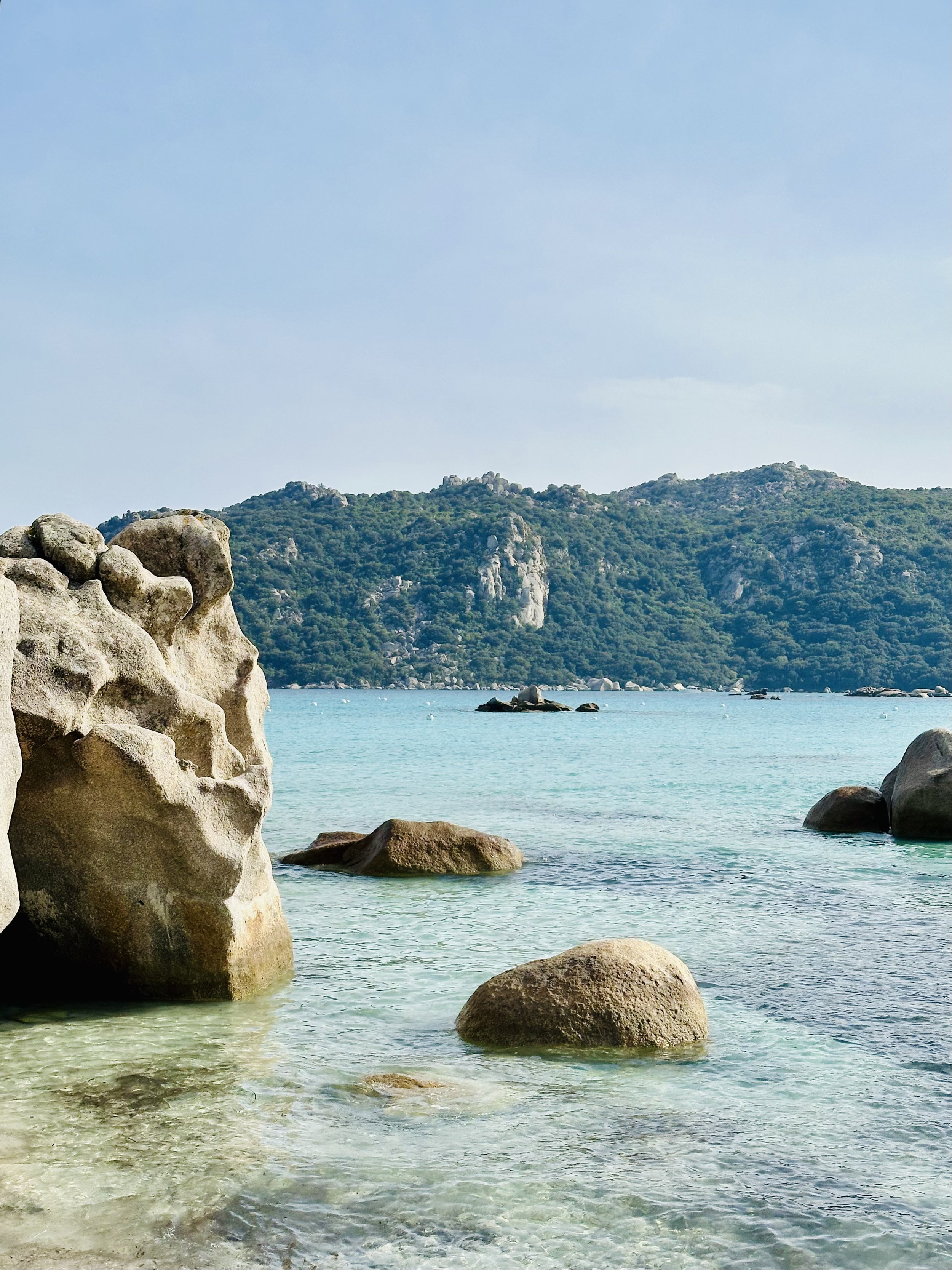
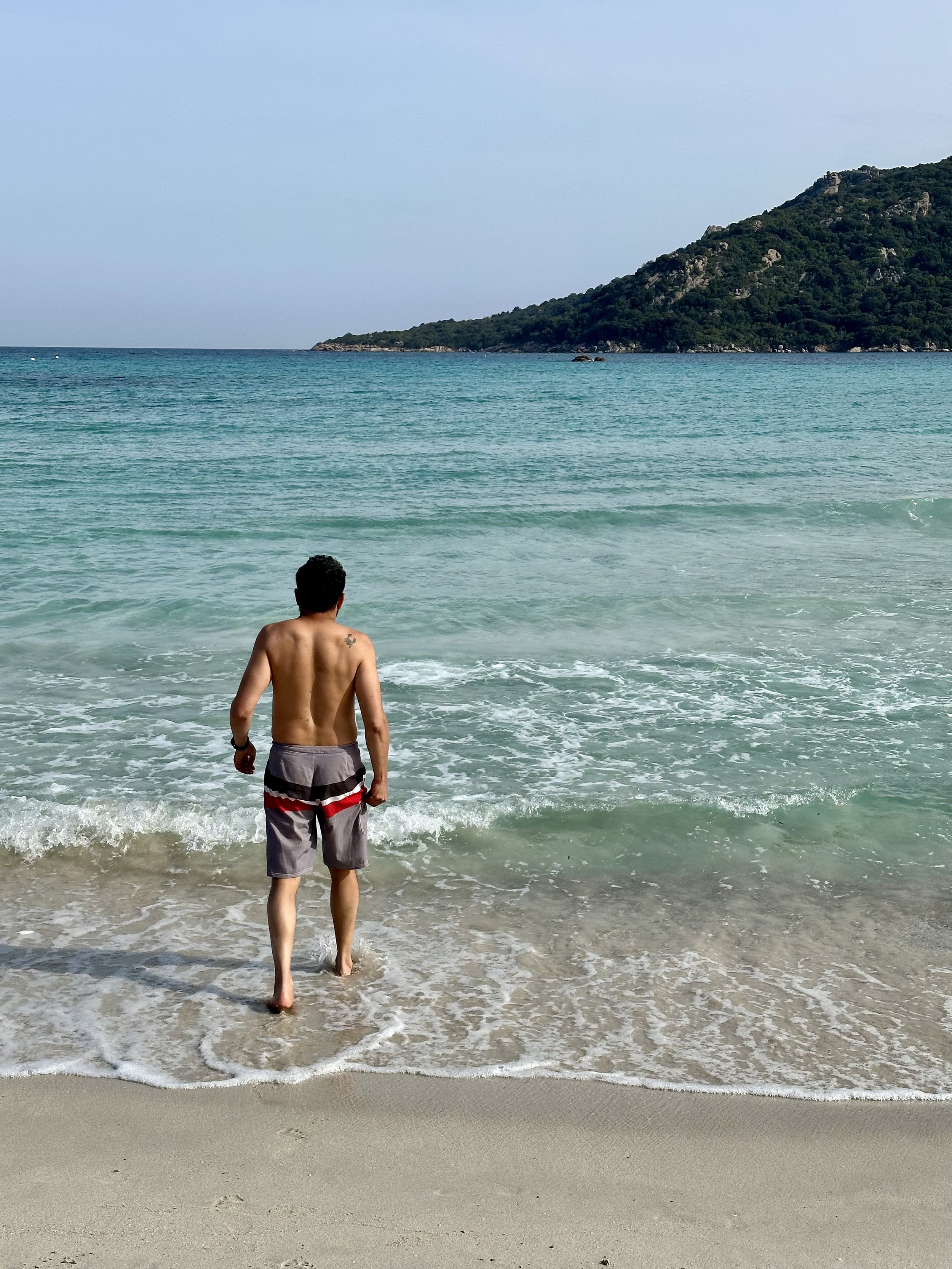
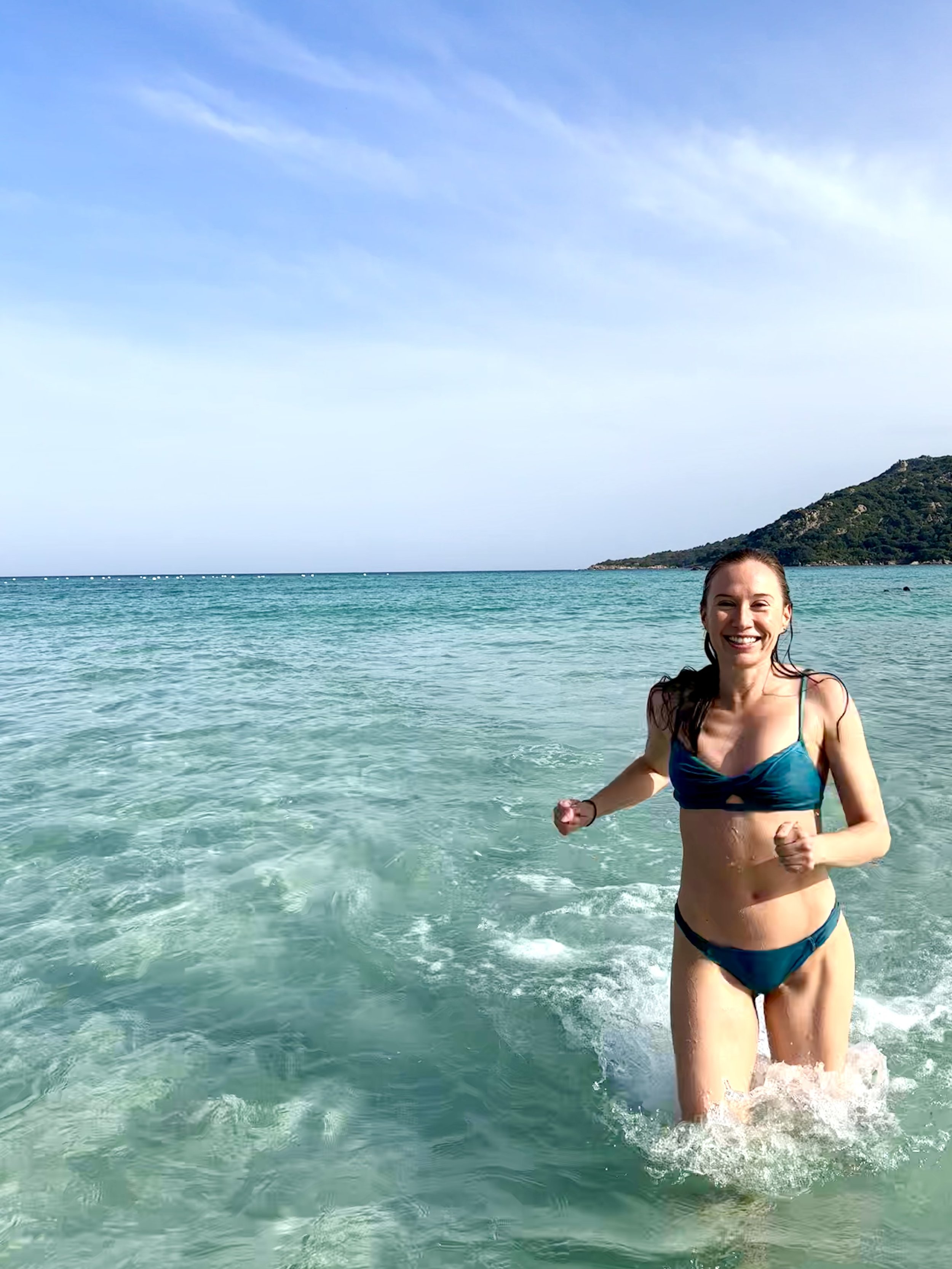
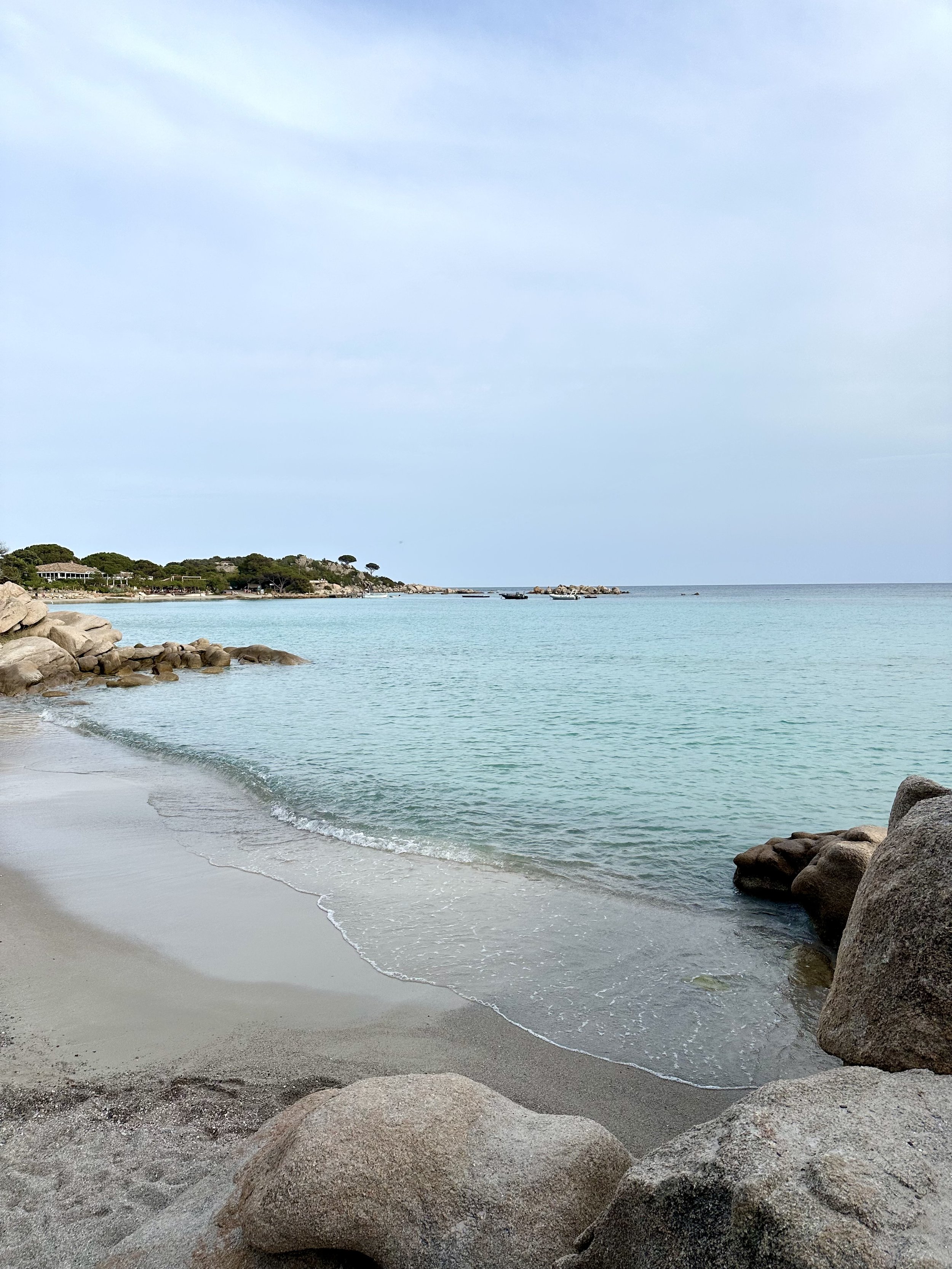
It was a bit chilly at this point of the day, but neither of us could resist a swim. I’ll be honest - between the wind and the waves - it was less a peaceful float, and more chaotic splashing - but alas! There were more beach days to come.
Click here for Part 2: The Southeast.

